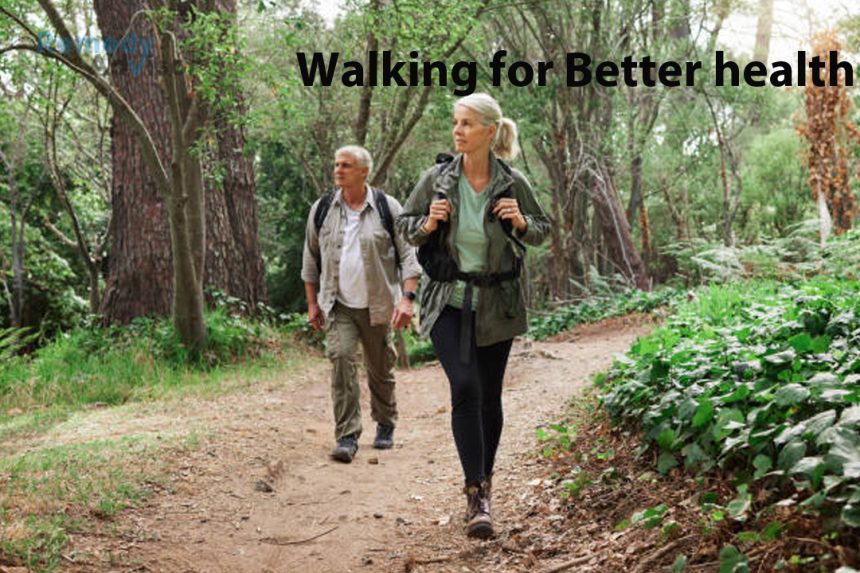Walking may be the ultimate form of exercise. It can provide just as much of a workout as running even cross-country skiing without the inconvenience, expense or risk of injury associated with those activities.
With a few simple alterations to your stride, walking is also a great way to melt away pounds and strengthen muscles. And, of course, walking is a weight-bearing exercise (good for bone-building) and it can be done anywhere. All you need is a decent pair of shoes.
Optimizing your stride
Conventional walking is too easy to be much of a workout. That’s because it uses only a small part of the body’s muscle mass.
According to a Columbia University study, conventional walking is mostly momentum. Only in the final third of the stride do the muscles produce power for forward movement and even then the power comes from only the modestly sized calf muscles the soleus and gastrocnemius.
To boost the fitness value of walking, you must put more muscle to work. The larger the muscle mass you involve with each stride, the greater the health benefits, including weight loss. Here are three ways to optimize your stride…
• Make the muscles work earlier
Most walkers apply power only to the end of each stride, as they push off with the ball of the foot and the toes.
Instead: Start extending a backward force against the ground the instant your heel touches down. Think of pulling the ground under your body with your leg. This action involves the back of the thigh (hamstrings) and the buttocks (gluteals). Together, these muscles are up to five times bigger than your calf muscles. End each stride with a push-off as you normally would.
• Swing your hips
Most people use only the legs to carry their feet forward.
Better: Reach forward with the hip of the leg that is coming forward for the new stride. Picture a line through your hips, running from left to right. If you’re strolling, this line stays perpendicular to the direction of travel. In aerobic walking, the line should be at a 45 degree angle to the direction you’re headed.
Result: You work your abdominals, lower back muscles and even more of the gluteals.
• Boost your speed
Focus on acceleration as soon as your heel strikes the ground. Imagine your eyes on a level plane. As you walk, keep them level, with no bouncing. Look at a lamppost, tree or another object that is relatively close to you. Walk so smoothly that the object does not jiggle.
Body benefits
Put more muscle mass to work, and you will more quickly derive the benefits of walking better fat metabolism, improved glucose tolerance, a lower resting heart rate, reduced stress, etc. The difference between plain walking and aerobic walking is dramatic.
Example: A woman with type 2 diabetes who is taking insulin joined one of my walking classes. For several years, she had been walking five miles six days a week. She needed 20 units of insulin a day. Her blood sugar level averaged 135.
After trying the proper technique for one month, she found she needed less insulin 12 units daily. Her blood sugar level had declined to a more normal 99.
Getting started
To reduce your risk of injury, start your walking program gradually. You can begin by taking a 10- to 20-minute stroll, three or four days a week, even if you’re already fit.
Add five minutes a week, working up to an average of 40 to 50 minutes a session. This is the ideal workout length for weight loss and health benefits.
As you increase workout time, also increase your speed. You’ll know you’ve reached the proper intensity if…
- You’re slightly out of breath throughout the workout.
- You’re a bit above the comfort zone but are able to finish the workout. On a scale of 5 (resting) to 20 (all-out effort), your level of exertion should be about 14.
- You’re able to talk in phrases only, not complete sentences. In fact, you won’t feel like talking at all.
Picking the right shoes
Try on a wide variety of walking and running shoes to find the pair that best fits your feet.
Look for: Moderate cushioning low, beveled heel roominess in the toe box flexibility an “Achilles notch” at the back of the collar (to allow space for your Achilles tendon).
Have a salesperson check the wear pattern on your old shoes before he/she recommends a new pair.







